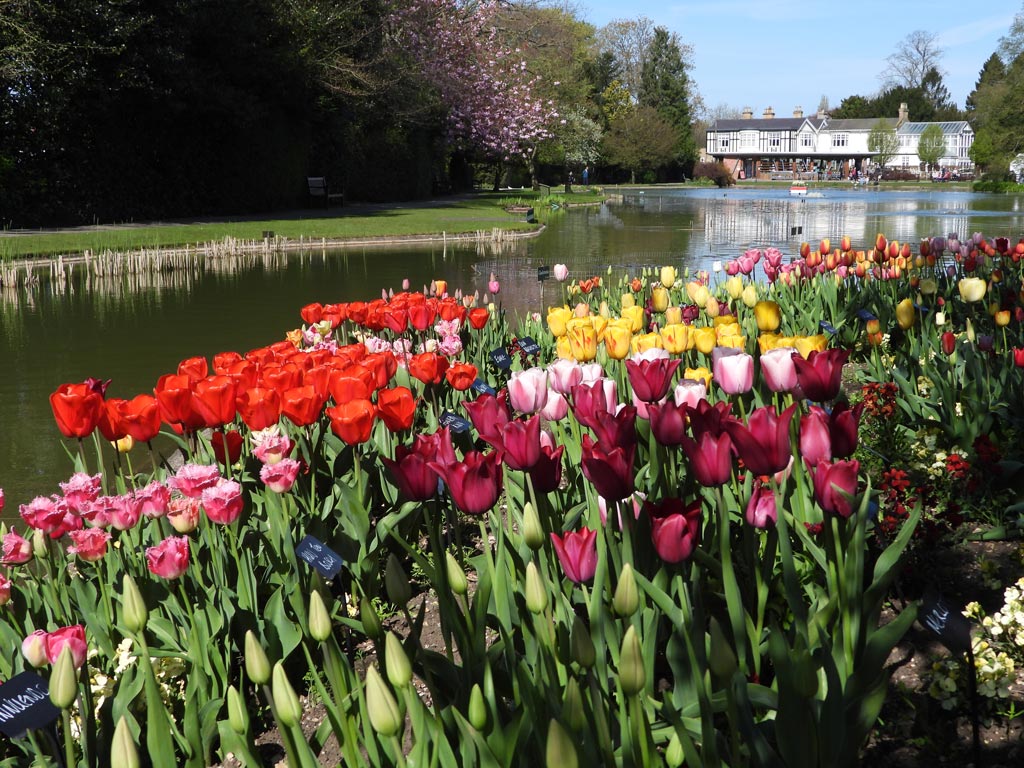The History Of Burnby Hall Gardens
Burnby Hall was originally purchased by Percy and Katharine Stewart in 1901. Originally called “The Elms” the house was the property of the Powell family, local solicitors from whom the Stewarts had initially leased the premises. They renamed the house “Ivy Hall” and commenced three years of renovation which saw its transformation into an opulent Edwardian residence.
In 1904, work commenced on the gardens next to the hall with the creation of the “Upper Water” by the Pocklington building company Allisons. Originally designed for coarse fishing, this lake was subsequently extended, and an additional and smaller “Lower Water” was added around 1910.
The Edwardian period also saw the creation of an extensive Rock Garden, designed by Backhouses of York who at that time were the “go to” name for creations of this nature, in addition to the building of potting sheds and a summerhouse.
Between 1906 and 1926, with the hall complete and work on the gardens progressing, the Stewarts embarked on eight world tours in which every continent except South America was visited. These involved extensive travel, hunting expeditions, and interaction with local cultures, the latter resulting in the acquisition of a collection of curiosities, statuary and tribal artefacts which now form the Stewart Museum Collection.
By 1926, the Stewart estate had increased in size to over 3000 acres and stretched as far as the village of Burnby and “Ivy Hall” had been re-named “Burnby Hall” to reflect this.
1935 saw the Stewarts engaging Amos Perry, a renowned horticulturalist, to plant 50 varieties of Hardy Waterlily (Nymphaea) in the Upper and Lower lakes and this was the genesis of the National Collection which exists today.
Following the stock market crash of 1926, and exacerbated by the death of Katherine Stewart in 1939, the estate dramatically reduced in size as land was sold off by Percy Stewart until his death in 1962. By this time, the hall and its surrounding gardens formed the majority of land then owned by him.
The Stewarts had no children but had decided in 1912 to leave their estate in trust to the people of Pocklington on their deaths. This very generous gesture resulted in the Stewarts Trust being established in 1964 to ensure that the Gardens and Museum Collection were maintained and preserved for future generations to enjoy.
Responsibility for the maintenance of the waterlily collection originally created by Perry’s of Enfield was taken over by Stapeley’s Water Gardens in the mid-1980’s, with the collection being granted National Collection status in the 1990’s, and the Stewarts Trust subsequently took over full responsibility for this themselves in the early 2000’s.
In 2007, the existing Stewart Museum was replaced by a bespoke building, financed by the Heritage Lottery Fund. The HLF also funded an extensive Golden Jubilee Restoration Project of the Upper Lake, Rock Garden and Edwardian Summerhouse between 2016 and 2019.
The Gardens are now a high-profile attraction, with around 97,000 customers visiting them every year. The horticultural excellence of the Gardens, along with an Arts Council Accredited Museum, enhanced by children’s events and band concerts, ensures that as wide a variety of people as possible can continue to enjoy the legacy of Percy and Katharine Stewart.


